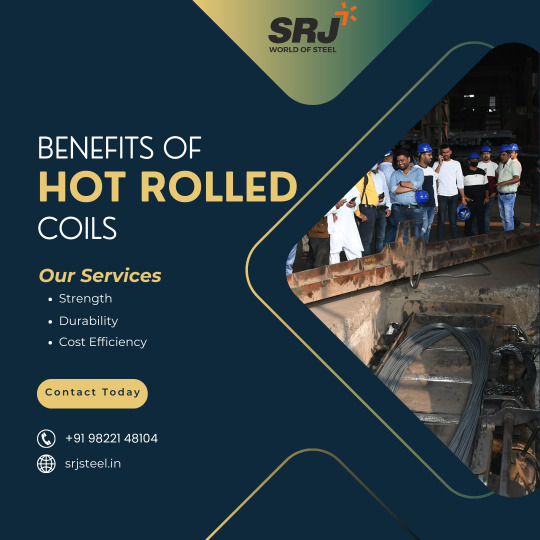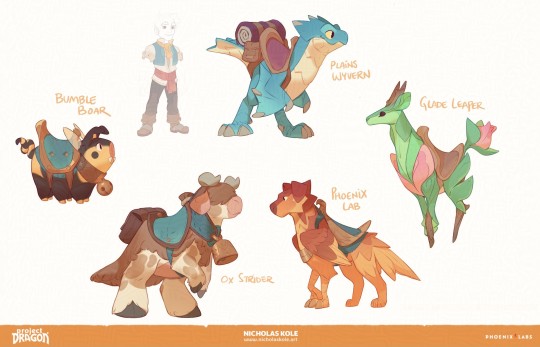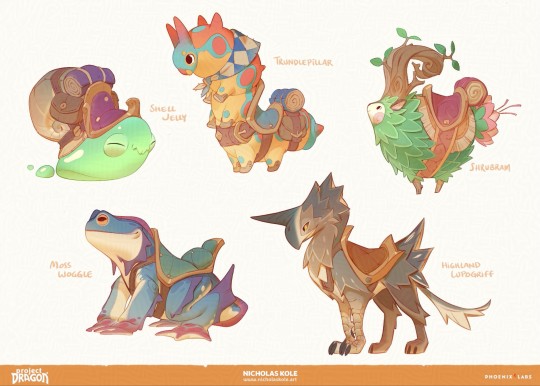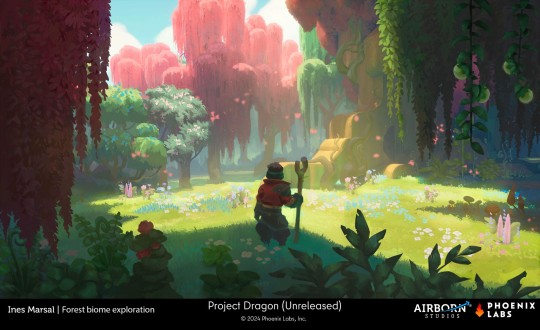#Industrial Projects
Explore tagged Tumblr posts
Text
Captive Power
Captive power is the generation of electricity in which a business or industry installs its own power plant to meet its energy needs. This provides a reliable and generally inexpensive supply of electricity, eliminating reliance on the main grid.
1 note
·
View note
Text
Valuing Intellectual Property | A New Challenge for Industrial Estimating Services
Introduction As industrial sectors evolve through digitalization, automation, and innovation, intellectual property (IP) has become one of the most valuable assets within a project. From proprietary software and patented designs to custom manufacturing processes and smart technologies, IP is reshaping how value is created and assessed. However, traditional industrial estimating services—built around physical materials, labor, and equipment—are now faced with a complex challenge: how to accurately estimate the cost and value of intellectual property within industrial projects.
This emerging frontier calls for a redefinition of scope in industrial estimating services, expanding their role to account for intangible assets that drive both performance and competitive advantage.
Why IP Matters in Industrial Cost Estimation In many modern industrial developments, especially in high-tech manufacturing, advanced energy systems, and Industry 4.0-enabled factories, intellectual property comprises a significant portion of overall value. For instance:
A custom automation algorithm embedded in a robotics line
Proprietary energy-efficiency systems in a chemical plant
Secure software platforms for controlling distributed manufacturing
These IP-driven elements often represent a large portion of R&D investment and are critical to long-term operational efficiency. An accurate estimate must include not just the cost to implement or license such assets but also the potential risk, return, and lifecycle value they bring.
Key Categories of Intellectual Property in Industrial Settings Understanding how IP appears in industrial projects is essential for accurate estimation. Common categories include:
Patents: Inventions or processes owned or licensed by the project owner
Trade Secrets: Confidential formulas or methods applied during production
Software and Algorithms: Custom-coded tools used in automation and process control
Design Rights: Proprietary architectural or engineering designs
Licenses and Royalties: Payments made to third parties for the use of protected IP
Each of these categories demands unique valuation methods and estimation strategies that differ from traditional capital expenditures.
Challenges in Estimating IP Costs Valuing IP in industrial settings is inherently complex due to:
Intangibility: Unlike steel or labor hours, IP has no physical form and often lacks clear benchmarks.
Variable Cost Structures: Licensing fees, development costs, and long-term support vary widely by industry and supplier.
Lifecycle Uncertainty: IP might evolve or become obsolete quickly, adding estimation risk.
Confidentiality: Many IP assets are guarded by NDAs or corporate secrecy, limiting estimator access.
As a result, industrial estimating services must blend financial modeling, legal review, and technical expertise to deliver accurate assessments.
Approaches to Integrating IP into Estimates To manage these complexities, forward-thinking estimating services apply several strategies:
Cost-Based Estimation: Involves calculating the original R&D or development costs and applying a markup based on projected use.
Market-Based Valuation: Uses comparative licensing or sales data for similar IP assets, when available.
Income-Based Modeling: Projects future cash flows generated by the IP (e.g., operational savings, productivity gains) and discounts them to present value.
Expert Collaboration: Engaging IP lawyers, technology consultants, and accountants to accurately categorize and value protected assets.
Case Example: Estimating an Advanced Robotics System A manufacturing client planned to install a robotics line powered by proprietary AI software developed in-house. While the hardware had clear market prices, the software’s value was harder to define. The industrial estimating service worked with internal developers and finance experts to model the cost of development, anticipated efficiency savings over ten years, and licensing potential if the software was reused across other sites.
By incorporating both direct and indirect value contributions, the estimate provided a holistic picture that helped justify a higher upfront investment.
Benefits of IP-Savvy Estimating Industrial clients gain several advantages when IP is accurately included in estimates:
More Realistic Budgets: Avoids underbudgeting by recognizing the full cost of IP integration or licensing.
Stronger Business Cases: Supports ROI projections for innovation-driven projects.
Better Risk Assessment: Helps identify where IP exposure (e.g., licensing dependencies) may affect project costs.
Investor Appeal: Demonstrates comprehensive valuation, which is critical for attracting investment in innovation-heavy projects.
New Tools and Trends As the demand grows, some industrial estimating platforms are adapting to include IP modeling features:
Digital Asset Registries: Help track owned or licensed IP within the project scope.
AI-Powered Valuation Engines: Use historical and market data to suggest value ranges.
Blockchain for IP Tracking: Ensures provenance and licensing status of digital IP in complex supply chains.
These innovations indicate that IP valuation is becoming a mainstream requirement in industrial estimating practices.
Limitations and Ongoing Development Despite advances, valuing IP remains a partly subjective exercise. The uniqueness of each asset and the lack of standard benchmarks can introduce variability. Moreover, legal changes—such as patent law shifts or tax implications—can alter value significantly.
Estimating services must remain adaptive, continuously updating models and methodologies to reflect both technical and legal developments.
Conclusion The rise of intellectual property as a strategic asset in industrial projects is reshaping the landscape for estimating services. No longer confined to bricks, pipes, and wires, estimators must now navigate code, algorithms, and trade secrets. By embracing this challenge, industrial estimating services not only improve budget accuracy but also elevate their strategic role in capital planning and innovation management. The result is a more holistic view of project value—one that aligns with the digital age.
#industrial estimating#intellectual property#IP valuation#industrial projects#cost estimation#IP assets#software cost#patent cost#innovation budgeting#intangible assets#ROI modeling#licensing fees#proprietary software#automation IP#manufacturing IP#trade secrets#digital asset valuation#tech integration#income-based estimation#market-based estimation#IP in construction#software estimation#R&D cost#risk analysis#estimating strategy#lifecycle cost#future-proofing#estimating service tools#high-tech estimating#cost planning
0 notes
Text
Exploring the Benefits of PVB in the Solar Energy Industry.
The photovoltaic inverter industry is rapidly evolving, and one brand that stands out is PVB. With a strong commitment to innovation and quality, PVB is making waves in the solar energy sector, especially for industrial projects.
PVB's inverters are designed to optimize energy production and enhance the efficiency of solar systems. Their advanced technology ensures that businesses can harness the full potential of solar energy, leading to significant cost savings and a reduced carbon footprint.
As industries increasingly turn to renewable energy sources, PVB is at the forefront, providing reliable and effective solutions. Their commitment to sustainability and performance is helping to drive the transition to cleaner energy.
If you're considering solar energy for your industrial project, PVB's inverters are definitely worth exploring. They not only enhance energy efficiency but also contribute to a greener future.
0 notes
Text
Benefits of SCADA Control Systems

SCADA (Supervisory Control and Data Acquisition) is a control system architecture used to monitor, control, and analyze industrial processes in real-time. It integrates hardware and software components to collect data from field devices, process it, and provide actionable insights to operators.
#automation#trending#tumblr trends#viral#bestdeals#trendingnow#viralpost#rockwell automation#allen bradley#plc#scada#hmi#software#solution#industrial projects#industrial products
1 note
·
View note
Text
Shop Bolt Anchor FWA at Shirazee Traders, offering strong and dependable fastening solutions tailored for various construction and industrial projects.
0 notes
Text
#Construction companies in Saudi Arabia#A reliable construction company in Saudi Arabia#construction company Saudi Arabia#BLACK CAT GC#industrial projects#infrastructure development#Technology and innovation in construction work#Civil construction services
1 note
·
View note
Text
Advantages of Using Hot Rolled Coils in Industrial Projects

Steel is the skeleton of modern industrial infrastructure, and hot rolled coils stand as a cornerstone of transformative engineering. These remarkable metal products represent more than just raw material—they are the foundation of innovation, strength, and reliability across diverse industrial landscapes.
Understanding Hot Rolled Coils: A Technological Marvel
A new manufacturing process for forming hot rolled coils transforms the steel into a high-performance multi-tasking material. Steel can be accurately shaped and made soft when heated to an extremely high temperature, about 1,700°F.
The Production Process
The transformation of steel involves several critical stages:
Heating steel billets to near-molten temperatures
Passing the heated steel through powerful rolling mills
Precisely controlling thickness and dimensional accuracy
Cooling and coiling the transformed metal with advanced techniques
Critical Applications Across Industrial Sectors
Hot rolled coils have revolutionized multiple industries by providing exceptional mechanical properties and adaptability.
Automotive Manufacturing
Structural components requiring high strength
Body panels with superior formability
Chassis and frame elements needing consistent performance
Construction and Infrastructure
Reinforcement for bridges and buildings
Large-scale structural frameworks
Earthquake-resistant design elements
Heavy Equipment and Machinery
Durable machine components
Agricultural equipment fabrication
Mining and extraction industry machinery
Unparalleled Performance Characteristics
Mechanical Superiority
Hot rolled coils distinguish themselves through remarkable attributes:
Enhanced structural integrity
Superior tensile strength
Excellent weldability
Consistent metallurgical composition
Resistance to structural deformation
Economic Advantages
Beyond technical specifications, hot rolled coils deliver significant economic benefits:
Lower production costs compared to alternative manufacturing methods
Reduced material waste during fabrication
Streamlined manufacturing processes
Minimal secondary processing requirements
Technological Innovations in Hot Rolled Coil Production
Modern metallurgical techniques have transformed hot rolled coil manufacturing:
Advanced computer-controlled rolling processes
Precision temperature management systems
Microscopic structural analysis
Real-time quality monitoring technologies
Metallurgical Precision
Each hot rolled coil undergoes:
Complex microstructure engineering
Stringent quality control measurements
Comprehensive performance testing
Detailed chemical composition verification
Comparing Hot Rolled Coils: Why They Outperform Alternatives
Cold Rolled vs. Hot Rolled: A Comprehensive Analysis
While cold rolled coils offer certain advantages, hot rolled coils provide:
Greater dimensional flexibility
Enhanced mechanical properties
More cost-effective production
Superior performance in high-stress environments
Sustainability and Environmental Considerations
Hot rolled coil production has evolved to address environmental concerns:
Reduced carbon emissions in manufacturing
Increased recyclability of steel products
Energy-efficient production techniques
Minimized industrial waste generation
Industrial Reliability: Beyond Material Performance
Selecting hot rolled coils represents a strategic decision that impacts:
Structural longevity
Project cost-effectiveness
Performance under extreme conditions
Long-term maintenance requirements
Proven Track Record
Industries worldwide have consistently demonstrated the reliability of hot rolled coils through:
Successful large-scale infrastructure projects
Demanding automotive applications
Complex engineering challenges
Rigorous performance benchmarks
Making the Informed Choice
Hot rolled coils are not merely a material selection—they represent a comprehensive engineering solution. From microscopic structural integrity to macroscopic industrial applications, these remarkable products continue pushing the boundaries of what's possible in modern manufacturing.
Professionals seeking robust, reliable, and innovative material solutions will find hot rolled coils an unparalleled choice for challenging industrial projects.
Disclaimer: Always consult with metallurgical experts and conduct comprehensive material assessments specific to your project requirements.
#hot rolled coils#industrial projects#steel strength#construction material#automotive parts#heavy machinery#durable steel#cost-efficient steel
0 notes
Text
PLEASE support The Innocence Project. Let the state sanctioned murder of Marcellus Williams radicalize you into caring about incarcerated people. Don’t let those in office that allow for this to defeat you. Incarcerated people are among the most violated and exploited class of people in the United States. We have built a justice system that benefits off of the mass incarceration of marginalized people. Incarceration is used to disenfranchise people. It is used for modern day slavery. Anyone can become incarcerated. It is the quickest and easiest way for your government to strip you of your rights.
20K notes
·
View notes
Text
Innovations in Industrial Automation Projects | Takeoff Projects
Takeoff Projects specializes in innovative Industrial Automation project solutions, providing cutting-edge projects that enhance operational efficiency and productivity. Our expertise spans various industries, delivering customized automation systems tailored to meet unique needs. With a commitment to excellence and technological advancement, Takeoff Projects is your trusted partner in driving industrial transformation and achieving seamless, automated processes.

Air Pollution Monitoring Using Raspberry Pi
The paper will suggest a monitoring approach for air quality parameters based on Raspberry Pi. The system is implemented by using the Python language. The key values can be seen from the Internet of Things platform. The low-cost gas sensor is the source of air pollutant parameters. The parameters include fumes of smoke, carbon monoxide, and nitrogen-di-oxide, temperature, and humidity. Besides, when exceeding the limits of emission levels the alarm blinks. This can be considered as a warning bell for the authorities concerning the air pollution status. The graph is drawn using the values as the participants have been closely monitored.
Smart Ration Card System Using RFID and Embedded System
This session paper is about having smart ration cards based on RFID approach that can help declination forgery as the possibility of selling the material to someone else is there and he takes the profit and puts some false amount in their data. This ProjectArduino microcontroller, an RFID reader, an LCD, and a GSM module. The RFID tag is the member of the family information has been programmed and the consumer is required to show the tag to the RFID reader for scanning the tag. The part of the microcontroller for the reader will govern user authentication. If a user is rightly found, then the ration quantity that needs to be accepted by the purchaser to fulfill the whole number of family members might be shown on the display device. This smart card is 90% safe against theft because the statistics are continuously submitted to the authorities with the GSM (Global System for Mobile) technique which is commonly installed on phones.
Conclusion
Takeoff Projects excels in delivering Industrial Automation Project solutions that drive efficiency and innovation. Projects like Air Pollution Monitoring using Raspberry Pi and Smart Ration Card System using RFID demonstrate our commitment to addressing real-world challenges with advanced technology. Trust Takeoff Projects to lead the way in transforming industrial processes and enhancing productivity through cutting-edge automation systems.
#Industrial Automation#Industrial Automation Projects for Students#IoT-Based Industrial Automation Project Report#Automation Engineer#Industrial Projects#Automation Projects
0 notes
Text
This is kind of brilliant, and necessary.
A group of adult entertainment actors is about to spend $100,000 in the next 29 days running anti-Project 2025/anti-Trump ads on adult websites targeting their male audiences in seven battleground states: Pennsylvania, Michigan, Wisconsin, North Carolina, Georgia, Arizona, and Nevada.
Why?
Page 5 of the 920 page Project 2025 manifesto says of pornography:
It has no claim to First Amendment protection. ... Pornography should be outlawed. The people who produce and distribute it should be imprisoned. Educators and public librarians who purvey it should be classed as registered sex offenders. And telecommunications and technology firms that facilitate its spread should be shuttered.
Now whether or not you approve of the porn industry, it's clear that Project 2025 is talking about a much broader thing: whatever these right-wing zealots determine to be "pornographic." Note how teachers and librarians are mentioned specifically. Some bookbanners have called children's books pornographic simply for featuring a lgbtq character.
Closer to tumblr's heart, smutty fanfic and fanfic sites would certainly be swept up if Project 2025 ever came to pass.
So kudos to the adult film stars for stepping up and spreading the word.
#project 2025#first amendment#us politics#2024 elections#adult entertainment industry#vote democrat#tagging this is a challenge
2K notes
·
View notes
Text

version of this picture for the target audience of me and me only
#everytime i see it i'm like scrap metal for her industrial music?? scrap metal for her industrial music tonight queen????#so yeah. behold#my slightly bonkers craft projects#butch#lesbian#sorry butch tag. youre getting shitposts to go with with your sex posting now#industrial music
7K notes
·
View notes
Text
Site selection by architects in factory projects.
Architects play a crucial role in factory site selection. They consider factors like:
Land availability: Sufficient space for building, expansion, and future needs.
Infrastructure: Proximity to roads, utilities, and transportation facilities.
Environmental impact: Compliance with regulations and potential for sustainable design.
Zoning regulations: Adherence to local zoning laws and restrictions.
Cost analysis: Evaluating land costs, construction expenses, and long-term operational costs.
By carefully considering these factors, architects help ensure the success and sustainability of factory projects.
0 notes
Text
Meeting Circular Economy Demands Through an Industrial Estimating Service
Introduction As industries evolve to meet sustainability goals and reduce environmental impact, the principles of the circular economy are gaining momentum. A circular economy emphasizes keeping materials in use, minimizing waste, and designing for recyclability. While these values are often discussed at the design and policy level, they also have a direct influence on cost planning and project feasibility. Industrial estimating services are increasingly being called upon to factor circular economy considerations into their cost models, enabling smarter resource use and long-term value recovery.
Understanding the Circular Economy in Industry In contrast to the traditional linear model of "take, make, dispose," the circular economy focuses on extending the life cycle of materials and products. This includes strategies like reuse, remanufacturing, recycling, and designing out waste. For industrial projects, this may involve selecting recyclable materials, designing modular components for easy disassembly, or budgeting for end-of-life recovery processes.
These strategies aren’t free — they come with specific costs and trade-offs that need to be identified early. That’s where an industrial estimating service becomes indispensable.
The Expanding Scope of Estimating Services Traditionally, industrial estimating services focused on materials, labor, and equipment to forecast initial capital expenditures. However, the move toward circular design and sustainability has added new dimensions to the estimating process. Modern estimating services must now account for:
Lifecycle Costing: Estimating not just the upfront costs but also maintenance, repair, and recycling costs.
Material Recovery Value: Including the future resale or salvage value of materials in cost plans.
Sustainability Incentives: Factoring in subsidies, tax credits, and compliance costs for meeting green certification standards.
Modular and Flexible Design: Costing for structures that allow easy upgrades, relocations, or disassembly.
Cost Implications of Circular Economy Design Choices Incorporating circular strategies into industrial projects may increase costs in one phase but reduce them significantly in others. For example, using modular steel components might be more expensive than cast-in-place concrete initially, but the steel can be recovered and resold after the facility’s lifespan ends.
An industrial estimating service evaluates these trade-offs to help clients make informed decisions. These services use sophisticated modeling techniques to compare multiple scenarios — traditional linear construction vs. circular design — to demonstrate the financial and environmental impacts over time.
Leveraging Data for Circular Metrics To support circular economy goals, estimators rely on specialized databases that provide:
Environmental Product Declarations (EPDs): Which offer data on material sustainability.
Recyclability Ratings: For common industrial components and systems.
Deconstruction and Salvage Cost Benchmarks: Allowing precise planning for eventual material recovery.
Carbon Cost Multipliers: Quantifying the cost of embodied carbon emissions for different materials.
These inputs help estimators develop comprehensive cost models that align with both project budgets and sustainability mandates.
Industrial Use Case: Circular Design in a Manufacturing Plant Consider a manufacturing company planning to build a new facility with a 25-year operational life. The client wants to explore circular economy principles to support their ESG (Environmental, Social, and Governance) commitments. The industrial estimating service analyzes options like recycled steel framing, modular wall systems, and demountable interior components. They compare initial costs, lifecycle values, and the estimated salvage worth of components after decommissioning.
Although the circular design has a 12% higher upfront cost, the estimator shows that long-term savings from lower maintenance and higher salvage value reduce the net lifecycle cost by 18%. These insights help the client justify the upfront investment to stakeholders and comply with environmental regulations.
Aligning with Stakeholder Expectations Government bodies, investors, and clients are increasingly favoring businesses that integrate circularity and sustainability into their operations. An industrial estimating service ensures that these objectives are baked into the budget from day one, improving project transparency and attracting eco-conscious investors.
Estimators also help with reporting and documentation required for:
Green building certifications like LEED or BREEAM
Corporate sustainability audits
Government grant applications tied to environmental goals
Challenges and Opportunities Meeting circular economy demands can be complex due to lack of standardized cost data, varying regional regulations, and supply chain uncertainty for recycled materials. However, estimating services that invest in robust data systems and cross-disciplinary collaboration can turn these challenges into competitive advantages.
By being early adopters of circular metrics, these services position themselves as valuable partners for future-focused industrial projects.
Conclusion As industries transition to more sustainable models, the role of an industrial estimating service is expanding beyond cost control to strategic sustainability alignment. By integrating circular economy principles into the estimating process, these services enable better financial planning, resource efficiency, and environmental compliance. They not only help meet today’s project demands but also contribute to building a more responsible and regenerative industrial future.
#circular economy#industrial estimating#sustainable design#lifecycle costing#recycled materials#green construction#cost estimation#modular design#salvage value#ESG goals#deconstruction cost#material reuse#carbon footprint#cost planning#industrial projects#sustainability#estimating service#lifecycle analysis#recycled steel#estimating software#EPD data#long-term savings#green certifications#waste reduction#environmental compliance#circular planning#material efficiency#building reuse#estimating lifecycle cost#eco design
0 notes
Text
Have you ever wanted to play a cute monster taming game with lots of love and heart put into every inch and corner of it by a Team of fantastically talented artists?
Me too!! Too bad it got cancelled literally a few weeks before it was going to be anounced!
Artist Nicholas Kole on twitter along with many other talented artists have been sharing their work of nearly 4 years on this game. I cant imagine the heartbreak of working so hard on this project only for it to get canceled right before Release and everyone on the Team to get laid off.
It was meant to be an open world, minecraft inspired builder, with all sorts of unique creatures with various skins, variations depending on biomes, and even petting animations. That you could tame! It also had a large amount of beautiful and unique character customization. Here's some of the art ( NOT MY ART ) for the project!








Apparently alot of this game was near finished, coded, etc! ( ART ABOVE IS BY NICHOLAS KOLE , JOHANNES FIGLHUBER, INES MARSAL, AND MARIA LOBANOVA )
I dont know if the artists can look into crowdfunding ( the Studio still may own the IP ) , but myself and a few others have been trying to get the hashtag #bringbackprojectdragon get some traction on twitter! Maybe if the internet raises enough stink, the Studio might pay attention. Im not sure how likely that is but I desperately want thus game to exsist, it would be a dream game for me and many others im sure. So please consider joining in if you have a twitter.
#Not my art#nicholas kole#project dragon#creature taming game#creature concept art#game#please get this hashtag trending i would die for a game like this#im devastated#my autism would have me obsessed with this for years#dragon#animal game#taming#video game#pheonix labs#xbox#game dev#game development#gaming industry#games industry#layoffs
3K notes
·
View notes
Text
Understanding the essentials of PMMA positive resist is critical to the success of your project, especially if it's in the field of Semiconductor, Printed Circuit Board (PCB), Electronic / Industrial Metal Finishing, Photovoltaic, Printed Electronics, or Advanced Packaging Technologies. As PMMA (Poly(methyl methacrylate)) positive resist is widely used in such technologies, making an informed decision can contribute significantly to the outcome of your project. This guide offers valuable insights to help you make the right choice.
#PMMA Positive Resist#Material Selection#Comprehensive Guide#Lithography#Microfabrication#Semiconductor Manufacturing#Industrial Projects#PMMA Guide#Manufacturing Process#UK#AGAS
0 notes